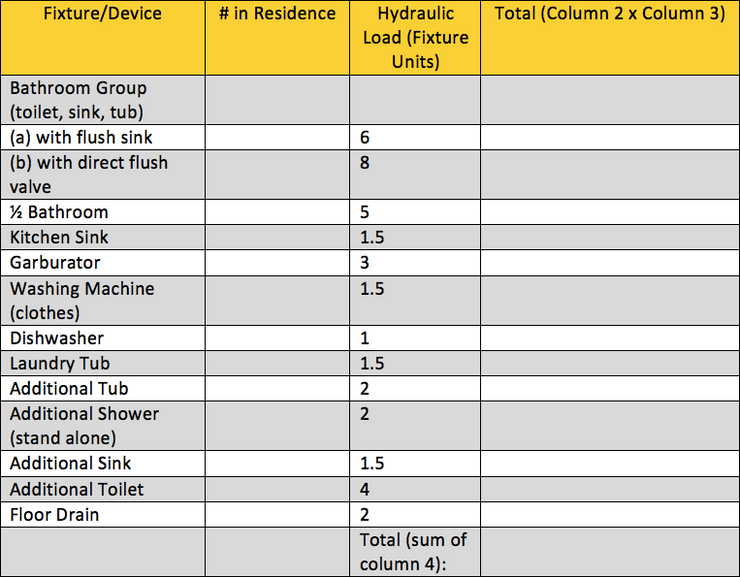The building code can be quite intimidating & confusing. Here is a quick guide to help you design a new system.
All septic systems that are within a single lot & rated to accept a total daily flow rate of <10,000 L must comply with the Ontario Building Code (OBC). The average 3-4 bedroom house is rated at 2000 L.
All systems must be built according to the OBC regardless of how the residence will be used (ex. seasonal cottage or low occupancy numbers). The system must be built to meet the maximum use possibility of the residence. This is in case the property is sold to new owners or changed from seasonal to year round use.
It is the homeowner’s responsibility to contact local governing authorities & acquire the necessary permits associated with the septic system installation or repair.
The following guide has been put together to assist you with meeting minimum OBC regulations for residential septic systems. Local governing authorities may have additional by-laws in place that include additional design requirements. The two main factors that dictate the size & design of a septic system are the maximum daily flow & soil/site conditions.
Step 1 – Calculate the Maximum Daily Flow (as per the OBC calculation)
All daily flow calculations start with the number of bedrooms. Most people assume it is based on the number of bathrooms or current occupants but that is not the case.
The OBC assumes that for every bedroom, 2 people could be living in the residence. Average daily use per person is approximately 275 L. Therefore, the maximum daily flow could be around 500-600 L/bedroom.
OBC Bedroom Rate:
1 Bedroom – 750 L
2 Bedrooms – 1100 L
3 Bedrooms – 1600 L
4 Bedrooms – 2000 L
5 Bedrooms – 2500 L
*If you are building a home with more than 5 bedrooms, consult a professional.
The OBC refers to the Maximum Daily Flow as “Q” for all calculations.
Figure out if the number of fixtures (bathrooms, sinks, etc.) OR the total living space will also need to be added to the base bedroom rate. Only the greater of these calculations will need to be added.
Fixtures:
If the total fixture count exceeds 20, then 50 L per additional fixture will need to be added to the bedroom base rate. Use the chart below to figure out the number of fixtures. *If you are building a residence with fixtures not listed, consult a professional.
If your total is greater than 20, calculate the additional flow of 50 L for each additional fixture over 20 (round up for each half). For example, if your total is 23, then you may have to add 150 L to the bedroom base rate.

Living Area (m2) – all living space, excluding basement
Next you will need to figure out if the house living space exceeds the included limit of 200 m2 & whether or not additional flow needs to be added to the base rate based on the following calculation:
For each 10 m2 of living space over 200 m2 to a maximum of 400 m2, calculate 100 L per 10 m2 (rounded up).
*If your household is greater than 400 m2, consult a professional.
Once you have calculated the living space & fixture count flow rates, whichever is greater must be added to the base bedroom rate. For example, let’s figure out the maximum daily flow rate for a 4 bedroom house with 3 full bathrooms, a kitchen sink, washing machine, laundry tub, dishwasher & a total living space of 224 m2.
The base rate will be 2000 L (4 bedrooms). We just need to figure out whether or not we need to add to this base rate.
Let’s do the math. The total fixture units for the house will be 23.5 (18 (3 full bathrooms) + 1.5 (kitchen sink) + 1.5 (washing machine) + 1.5 (laundry tub) + 1 (dishwasher) = 23.5
So for each fixture unit over 20 we have to add 50 L which will be 200 L. This means that the largest of the living space/fixture count is 300 L (from living space) which has to be added to the 2000 L. Therefore, the Maximum Daily Flow (Q) will be 2300 L.
Step 2 – Soil/Site Conditions
The other factor we have to figure out is the rate at which the treated wastewater will be absorbed into the soil. This is called a “T” time.
”T” time is equal to the number of minutes it takes for the water level to drop per cm in a water-filled hole in the receiving soil.
In sandy soil, a common T time is between 6 & 10. In sandy loam soil, a common T time is 20 & above because the smaller soil particles slow down the rate of absorption. The worst soil is clay where the T time is generally over 50 because clay particles are so fine & tightly packed.
The most common method of identifying the percolation rate is to send a soil sample to a lab for analysis. The cost associated with a soil analysis ranges from $200-$300 for the test, plus the time & labour to dig the hole & deliver the sample.
Another method is to have a professional perform a percolation test on site. The cost will be comparable to the lab analysis but results will be known sooner & more accurately.
Once the Daily Flow (Q) & “T” Time are identified, you can then figure out how large the system has to be.
Septic Tank Sizing
The septic tank must be twice* the value of Q but no less than 3600 L. The tank must also be dual chamber with 2/3 of the volume in the first compartment. This size is to provide 24 hour retention time of sewage to allow for proper separation of solids.
*If a garburator is installed, the volume must be three times the daily flow (Q).
Each type of system then has a different equation to be used to figure out the size.
For example:
Conventional Trench: Total Trench Length = (Q x T)/200
If T is 50 or greater, conventional trenches cannot be installed. A raised bed or “tertiary” unit will be required instead.

